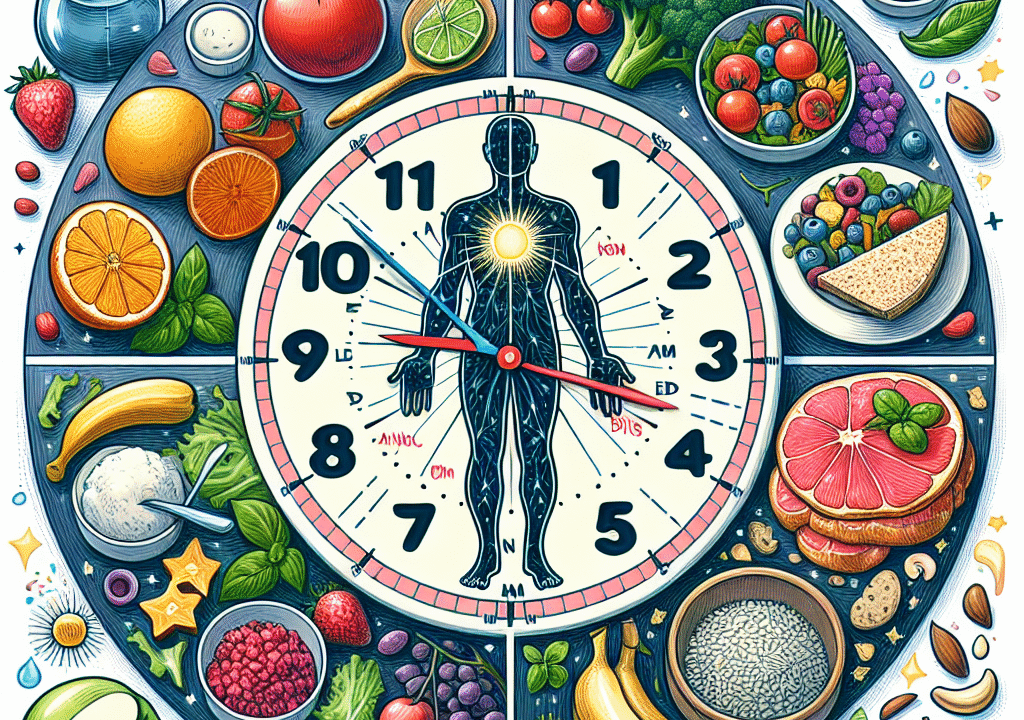
The Flexitarian Formula: A Modern Guide to Plant-Forward Eating
The way we eat is evolving. With growing awareness of how food affects our health and the environment, phrases like “flexitarian lifestyle for beginners” and “balanced plant-based diet with meat” are gaining traction. But not everyone is ready to eliminate animal products completely. That’s where the Flexitarian Formula comes in—a smart, satisfying approach that blends the best of both plant-based and meat-inclusive meals.
Rather than focusing on restriction, the Flexitarian Formula encourages adding more plant-based foods while still enjoying meat occasionally. It’s a balanced, realistic path to better health and a more sustainable lifestyle.
In fact, a 2022 survey by the International Food Information Council found that nearly one-third of Americans are trying to increase their intake of plant-based foods, yet only a small percentage consider themselves fully vegetarian or vegan. This shows that flexibility is what many people are really looking for.
As dietitian Abbey Sharp, RD, explains, “Flexitarian eating is the best of both worlds—you’re not missing out, you’re just adding more health and variety.”
What Is the Flexitarian Formula?
The Flexitarian Formula is a flexible and sustainable eating plan that shifts the focus to more plants without excluding meat entirely. This term was popularized by registered dietitian Dawn Jackson Blatner, who blended “flexible” and “vegetarian” to describe this inclusive style of eating.
Here’s how the formula comes to life:
– Plants take center stage: Meals are built around vegetables, fruits, legumes, whole grains, nuts, and seeds.
– Meat plays a supporting role: Animal proteins are used in smaller amounts for flavor and variety.
– Consistency over perfection: The goal is to reduce meat and explore more plant options, not to be perfect.
Simple swaps can make a big impact. Try adding chickpeas to chicken salad for added fiber or replacing half the ground beef in spaghetti with diced mushrooms to maintain that hearty flavor.
Flexitarianism isn’t a strict diet—it’s a flexible mindset that offers both freedom and satisfaction without the guilt.
Why Flexitarian Eating Is Gaining Popularity
Adopting a flexitarian lifestyle offers multiple advantages. It’s good for your health, easy to stick with, and better for the planet.
Health Benefits Without Feeling Deprived
The American Heart Association emphasizes that a diet rich in plant-based foods and low in red and processed meats can reduce the risk of heart disease, diabetes, and certain cancers by up to 30%.
A 2020 study from the National Institutes of Health found that individuals following a plant-forward diet had lower body mass indexes and healthier cholesterol levels compared to those following traditional omnivorous diets.
Dr. David Katz, a preventive medicine specialist, says, “You don’t need to be 100% vegan to enjoy the benefits of more plant-centered eating.”
Rather than cutting out entire food groups, flexitarianism supports healthy eating with occasional meat, making it easier to stick with long-term.
Lowering Your Environmental Footprint
According to the UN Food and Agriculture Organization, livestock farming accounts for about 14.5% of global greenhouse gas emissions. Making even small dietary adjustments—such as eating one plant-based meal per day—can save up to 200,000 gallons of water annually per person.
Swapping just one beef-based meal weekly with a plant-based alternative could have the same environmental impact as removing 12 million vehicles off the road, according to a 2021 report by the Environmental Working Group.
Sustainable Habits That Last
Strict diets often fail because they deprive people of their favorite meals. Flexitarianism avoids this mistake. By offering flexibility, it allows you to enjoy beloved dishes while exploring new, healthier ingredients.
Tacos can still be delicious with spicy cauliflower or black beans instead of ground beef. Burgers can take on a new flavor with a mushroom-turkey mix that offers protein with fewer calories.
This adaptable approach makes it ideal for people looking for long-term wellness without constant food restrictions.
How to Build Satisfying Plant-Forward Meals
A major concern for meat lovers is feeling full and satisfied. Fortunately, it’s entirely achievable with deliberate choices.
Prioritize Umami-Rich Ingredients
Umami is the rich, savory flavor found in ingredients like soy sauce, mushrooms, miso, and roasted tomatoes. It’s a key component in creating satisfying meals.
Try enhancing pasta sauces with tomato paste and sautéed mushrooms. Use tamari or miso in soups for depth. For more satisfying recipes that skip the excess cholesterol, visit our health partner’s dedicated section on healthy eating at eDrugstore.com.
Let Meat Enhance, Not Dominate
Instead of centering a dish around meat, use it to accent other ingredients. For example, top a grain bowl with a few slices of grilled chicken alongside roasted vegetables and legumes.
Another great option is stir-frying a small amount of chicken with a large serving of vegetables such as bok choy, carrots, and broccoli in a flavorful sesame-ginger sauce.
Create Texture and Layers of Flavor
Meat adds richness, chew, and bold taste—but so do many plant-based ingredients.
Try:
– Crispy tofu or tempeh for a hearty, protein-rich bite
– Roasted cauliflower or eggplant for depth
– Caramelized onions or slow-cooked garlic for natural sweetness
– Spices like smoked paprika, cumin, or curry powder for global-inspired flavor
When meals satisfy through taste, texture, and substance, you’re less likely to miss the meat.
Easy Flexitarian Swaps You Can Try Now
Start making small, manageable changes to see big results over time. Here are a few simple switches to kick things off:
– Burger Night: Use black beans as a meat substitute or blend lean beef with mushrooms.
– Taco Tuesday: Swap ground beef for seasoned lentils or jackfruit for a similar texture and taste.
– Pasta Dinner: Use lentils and mushrooms in place of meat for a rich ragu-style sauce.
– Breakfast Upgrade: Replace bacon with tempeh strips or boost toast with avocado and protein-packed hemp seeds.
These ideas blend seamlessly into your weekly routine and offer all the flavors you love—with added nutrition.
Choose Progress, Not Perfection
At its heart, flexitarianism is about making thoughtful choices—not following hard rules. The intention is to boost your intake of plants while still enjoying moderate amounts of meat.
Start small:
– Try one meatless lunch or dinner each week
– Swap dairy milk for plant-based alternatives like oat or almond milk
– Mix lentils into your next pot of chili
With a little commitment, these changes become second nature—offering better health and a lower environmental impact in the process.
Dr. Michael Greger, author of How Not to Die, puts it plainly: “The best diet is the one you can stick with. The flexitarian approach respects that and meets people where they are.”
The Flexitarian Formula is less about being perfect and more about being intentional. Start with one small change and let it grow—because healthy eating should feel good and taste even better.
Share Your Flexitarian Favorites
Ready to dive in? Try your first plant-forward meal this week, and let us know what you created! Share your favorite flexitarian dish in the comments below and join a community of eaters committed to health, flavor, and flexibility.
References
– American Heart Association. “The Benefits of Plant-Based Diets.” 2022
– FAO. “Tackling Climate Change Through Livestock.” 2019
– Blatner, Dawn Jackson. The Flexitarian Diet. McGraw-Hill, 2008
– NIH. “Effects of Plant-Based Diets.” 2020
– Environmental Working Group Report. 2021
– International Food Information Council. “2022 Food & Health Survey”


